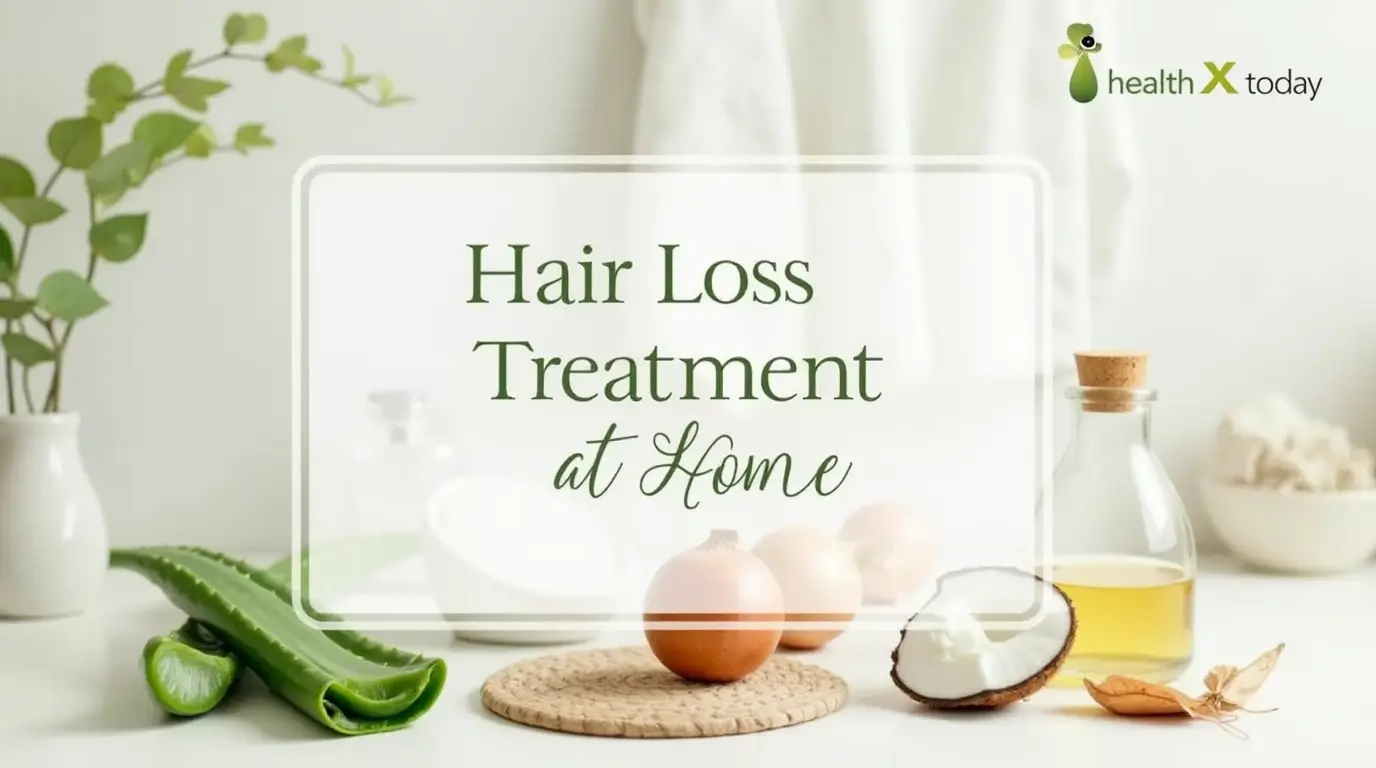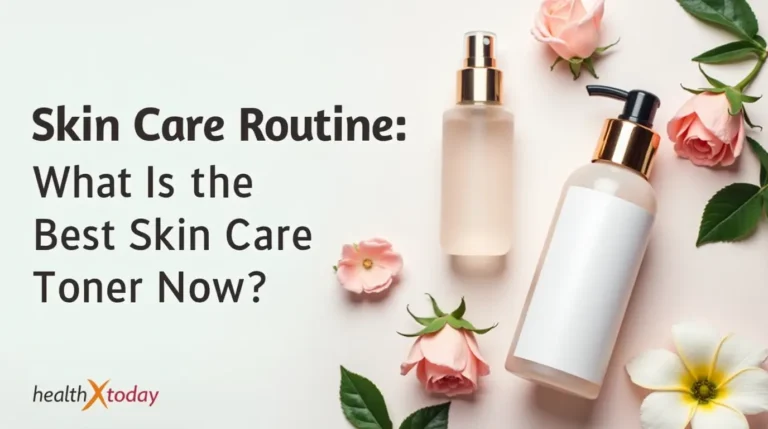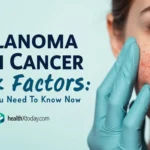We envision a world where everyone has the tools and knowledge to live a balanced, healthy, and fulfilling life. By providing reliable resources, personalized programs, and community support, we aim to be a beacon of hope for those on their health journey.
Table of Contents
Understanding Hair Loss: Causes and Types
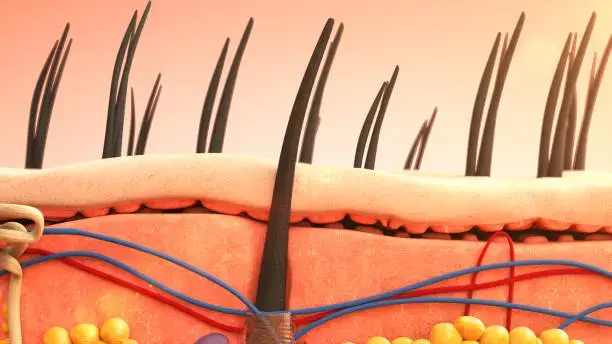
Hair loss, medically known as alopecia, is a condition affecting millions of people worldwide. Understanding the underlying causes of hair loss is crucial for effective treatment and management. This condition can arise from various physiological and psychological factors, which often interplay to contribute to the severity of hair shedding. Factors like genetics, hormonal changes, and health conditions are primary contributors to hair loss, alongside psychological stressors, which can exacerbate the situation.
One of the most common forms of hair loss is androgenetic alopecia, often referred to as male or female pattern baldness. Read more about : how to make hair stronger; This hereditary condition can manifest in both men and women, characterized by a gradual thinning of hair, typically starting at the hairline or crown of the head. Hormonal changes associated with androgens play a significant role in this type of hair loss, leading to a progressive miniaturization of hair follicles.
Alopecia areata is another notable type of hair loss that presents as sudden patches of baldness. This autoimmune disorder occurs when the immune system mistakenly attacks hair follicles, leading to unexpected hair loss. The exact cause of this condition remains unclear, but it has been linked to genetic factors and environmental triggers, including stress.
Telogen effluvium represents a form of temporary hair loss that typically occurs after significant stress, trauma, or illness. In this case, a larger-than-normal number of hair follicles enter the telogen (resting) phase, resulting in noticeable shedding. Factors like hormonal fluctuations due to pregnancy, childbirth, or certain medications can also trigger this type of hair loss.
Understanding these various types of hair loss can help individuals identify their specific condition, leading to better-informed decisions regarding potential treatments. Each type has distinct characteristics and causes, requiring tailored approaches for effective management. Engaging with healthcare professionals is recommended to explore appropriate treatment options based on individual circumstances.
Lifestyle Factors Affecting Hair Health
Maintaining healthy hair is intricately linked to various lifestyle factors, which can significantly influence hair growth and overall health. One of the most critical elements is nutrition. A balanced diet rich in vitamins and minerals plays a vital role in promoting hair vitality. Essential nutrients such as biotin, vitamins A, C, D, and E, along with minerals like zinc and iron, are fundamental for hair growth. For instance, biotin deficiency can lead to hair thinning, while iron helps boost circulation to the scalp, enhancing hair follicle health. Foods such as leafy greens, nuts, seeds, and lean proteins are excellent choices to foster healthy hair.
Moreover, hormonal changes also affect hair health. Hormonal imbalances, particularly in women, may lead to conditions such as androgenetic alopecia or telogen effluvium, resulting in hair loss. Menopause, pregnancy, and thyroid issues can markedly alter hormone levels, influencing hair growth patterns. Addressing these hormonal changes often requires medical consultation but maintaining a nutritious diet can provide additional support to mitigate negative effects.
Stress is another significant factor affecting hair health, as it can lead to hair loss conditions such as telogen effluvium. When stressed, the body reacts by pushing hair follicles into a resting phase, which can lead to increased shedding. Therefore, integrating stress management techniques such as mindfulness, yoga, or regular exercise is imperative. These practices not only help reduce stress levels but also improve overall well-being, further benefiting hair health.
Incorporating these lifestyle adjustments—optimizing nutrition, managing hormonal fluctuations, and implementing stress reduction strategies—can collectively contribute to the maintenance of robust hair. Making informed choices in these areas can greatly enhance the efficacy of any hair loss treatments pursued.
Over-the-Counter Treatments: What Works?

Over-the-counter (OTC) treatments have gained popularity as accessible options for individuals experiencing hair loss. Among these, minoxidil stands out as one of the most widely used and recognized products. Originally developed as a topical solution for high blood pressure, minoxidil is now approved by health authorities for promoting hair regrowth in both men and women. It is available in various forms, including liquid and foam, which can be easily applied to the scalp.
Minoxidil works by stimulating hair follicles and improving scalp circulation, allowing for enhanced nutrient delivery to hair roots. Research suggests that it can be effective, particularly in cases of androgenetic alopecia, commonly known as male or female pattern baldness. However, results can vary significantly among users. While some may begin to see improvements within a few months, others might experience minimal to no regrowth even after extended use.
Potential side effects are crucial to consider when using any OTC treatment. Users of minoxidil have reported mild adverse reactions, such as scalp irritation, itching, and unwanted facial hair growth in some cases. Therefore, it is advisable to perform a patch test before full application to minimize the risk of allergic reactions. It is also essential to follow the application instructions carefully to achieve the best results.
Many individuals have shared success stories regarding OTC treatments like minoxidil. Users have reported significant improvements in hair thickness and overall appearance after consistent use. However, it is important to note that hair loss can be a complex issue influenced by various factors, including genetics, stress, and diet. Thus, while OTC options can be effective for some, they may not work for everyone.
Prescription Medications: A Deeper Look
Prescription medications for hair loss have gained significant attention due to their effectiveness in mitigating the progression of androgenetic alopecia, commonly known as male or female pattern baldness. Among these treatments, finasteride is one of the most recognized options. Finasteride functions by inhibiting the action of the enzyme 5-alpha-reductase, which converts testosterone into dihydrotestosterone (DHT). Elevated levels of DHT are known to shrink hair follicles and lead to hair loss over time. By blocking this hormonal pathway, finasteride can promote hair regrowth in some individuals, making it a valuable intervention for those facing significant hair thinning.
When considering finasteride or any prescription medication for hair loss, it is essential for individuals to consult a healthcare provider. This step is crucial in determining whether the medication is appropriate based on personal health history and the specific characteristics of hair loss being experienced. Moreover, it is vital to discuss potential precautions associated with finasteride. For instance, the medication is generally not recommended for women, particularly those who are pregnant or may become pregnant, due to potential risk to a developing fetus.
Furthermore, like any medication, finasteride comes with potential side effects, which can range from mild to more serious. Commonly reported side effects include decreased libido, erectile dysfunction, and in rare cases, breast tenderness or enlargement. Patients should openly communicate any adverse reactions to their healthcare provider, who can offer guidance on the best course of action. Regular follow-ups are also advisable to monitor the treatment’s effectiveness and adjust dosages as necessary.
Overall, while prescription medications like finasteride can be potent tools in combating hair loss, patient education, consultation, and ongoing medical oversight remain integral to their safe use.
Natural Remedies: Do They Really Work?

Natural remedies for hair loss have garnered considerable attention among individuals seeking non-invasive treatments. These remedies often include essential oils, herbs, and various homeopathic approaches, offering a plethora of options that appeal to those preferring holistic methods. One of the most commonly mentioned natural treatments is the use of essential oils, such as rosemary and peppermint. Research indicates that rosemary oil may stimulate ha-ir growth by improving circulation to the scalp, while peppermint oil demonstrates properties that promote ha-ir follicle health. Preliminary studies have shown promising results, although further rigorous clinical trials are necessary to establish definitive effectiveness.
Herbal supplements are another avenue many explore. Ingredients like saw palmetto and ginseng have been linked to the inhibition of DHT, a hormone associated with ha-ir loss. While some anecdotal evidence supports these claims, scientific backing remains limited. For instance, saw palmetto extracts have exhibited potential benefits in small-scale studies, but conclusive evidence is still lacking regarding its long-term efficacy and safety.
Homeopathic remedies also present a unique option for individuals battling ha-ir loss. These treatments aim to address underlying issues by stimulating the body’s natural healing processes. However, the controversial nature of homeopathy raises questions about its scientific validity. Critics argue that the principles behind homeopathy lack robust empirical support, thus making it challenging to advocate for its use as a reliable treatment for ha-ir loss.
When considering natural remedies, it is crucial for individuals to approach these options with a critical mindset. While many people report positive experiences with these treatments, scientific evidence often varies. It is advisable for those seeking ha-ir loss treatments to consult healthcare professionals to ensure a comprehensive approach, combining effective strategies backed by research with personal preferences and lifestyle considerations.
Hair Transplants: The Surgical Option
Ha-ir transplant procedures have emerged as a viable solution for those experiencing significant ha-ir loss. This surgical option allows individuals to achieve a more permanent restoration of ha-ir, addressing concerns that over-the-counter treatments may not resolve effectively. There are two primary techniques employed in hair transplant surgery: Follicular Unit Transplantation (FUT) and Follicular Unit Extraction (FUE).
The FUT method involves removing a strip of scalp from the donor area, typically located at the back of the head. This strip is then dissected into individual follicular units, which are subsequently implanted in the recipient area. One of the main advantages of FUT is its ability to facilitate the transplantation of a larger number of grafts in a single session, which can be particularly beneficial for individuals with extensive ha-ir loss.
In contrast, FUE involves extracting individual ha-ir follicles directly from the donor site using a specialized punch tool. This technique is minimally invasive and results in less scarring, as there is no linear incision. FUE is often preferred by individuals seeking shorter recovery times and those who wish to wear shorter hairstyles post-surgery. Both methods can yield natural-looking results, but the choice between them largely depends on personal preferences and the specific characteristics of the patient’s ha-ir loss.
Recovery time varies between the two techniques, with FUT generally requiring a longer healing process. Patients can expect redness and swelling in the treated area, which usually subsides within a few days. While ha-ir transplant costs can fluctuate based on factors such as location, surgeon expertise, and the extent of ha-ir loss, it is important for individuals to view it as a long-term investment in their appearance.
Ultimately, the decision to undergo a ha-ir transplant should be made after careful consideration and consultation with a qualified professional. Gaining a clear understanding of the procedures, the potential risks, and expected results can empower individuals to make an informed choice regarding their hair restoration journey.
Emerging Treatments: Innovations in Hair Restoration
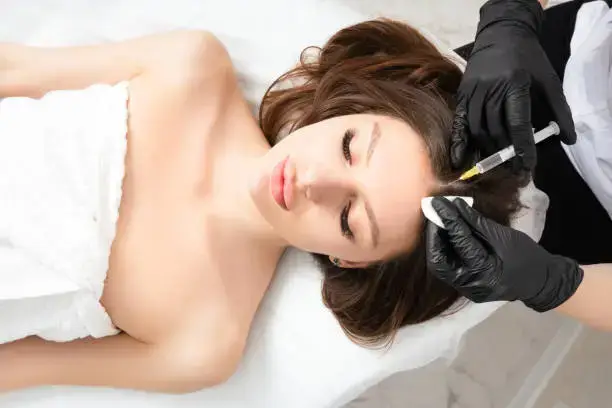
The realm of ha-ir restoration has witnessed significant advancements, particularly in the development of innovative treatments aimed at combating ha-ir loss. Among these emerging therapies, two notable techniques have gained traction: platelet-rich plasma (PRP) therapy and low-level laser therapy (LLLT). Both treatments represent a shift towards more scientifically grounded approaches, enhancing the overall efficacy of ha-ir restoration procedures.
Platelet-rich plasma therapy involves the extraction of a patient’s own blood, which is subsequently processed to concentrate the platelets rich in growth factors. This concentrate is then injected into the scalp in areas experiencing thinning or balding. The underlying principle is that the growth factors promote healing and cellular regeneration, potentially stimulating dormant ha-ir follicles. Preliminary clinical trials suggest that patients undergoing PRP therapy may experience increased ha-ir density and improved growth rates, making this an appealing option for those seeking hair restoration.
Similarly, low-level laser therapy utilizes specific wavelengths of light to penetrate the scalp, encouraging ha-ir growth at the cellular level. This non-invasive technique is thought to enhance blood circulation in the scalp and stimulate metabolism within ha-ir follicles. Studies have shown that LLLT can reduce ha-ir loss and promote regrowth in both men and women. As patients seek effective treatments with minimal side effects, the demand for LLLT continues to rise.
In recent years, numerous studies have underscored the effectiveness of these treatments, though results can vary from individual to individual. The ongoing research into PRP and LLLT signifies a promising future for ha-ir restoration methods. As health practitioners continue to refine these techniques and expand their understanding of ha-ir loss mechanisms, the potential for effective management of this condition increases, fostering hope among those affected by ha-ir thinning or loss.
Preventive Measures: Maintaining Hair Health
Preserving ha-ir density and promoting overall ha-ir health necessitate a multifaceted approach that encompasses proper ha-ir care routines, mindful ha-ir styling practices, and essential lifestyle modifications. A foundational aspect of ha-ir care involves selecting the appropriate shampoo and conditioner tailored to one’s specific ha-ir type. Regular cleansing is important, but over-washing can strip ha-ir of its natural oils, leading to dryness and brittleness. Therefore, a balanced washing schedule is crucial, typically two to three times per week, depending on individual needs.
Equally important is the proper management of ha-ir styling tools and products. Excessive use of heat styling tools, such as blow dryers and flat irons, can contribute to the weakening of ha-ir shafts. When heat styling is necessary, utilizing a heat protectant spray can mitigate damage. Additionally, opting for low-stress hairstyles—ones that do not tug excessively on the roots—can also help maintain ha-ir integrity. Avoiding tight ponytails or braids can reduce traction alopecia, a form of ha-ir loss resulting from the strain placed on ha-ir follicles.
Moreover, the selection of ha-ir products plays a significant role in ha-ir health. It is advisable to choose products free of harsh chemicals such as sulfates and parabens, which can adversely affect ha-ir condition. Instead, consider natural alternatives that nourish and hydrate ha-ir. Incorporating regular conditioning treatments and ha-ir masks can also enhance moisture retention and minimize breakage.
In addition to external ha-ir care, lifestyle changes are paramount for overall ha-ir health. A balanced diet rich in vitamins and minerals, particularly those that support ha-ir growth—such as vitamins A, C, and E, along with biotin and zinc—can profoundly influence ha-ir vitality. Staying hydrated is equally essential, as healthy ha-ir is reflective of overall bodily well-being. Prioritizing stress management through techniques like meditation or exercise can further aid in minimizing ha-ir loss caused by hormonal fluctuations and stress-related factors.
Emotional Impact of Hair Loss and Coping Strategies
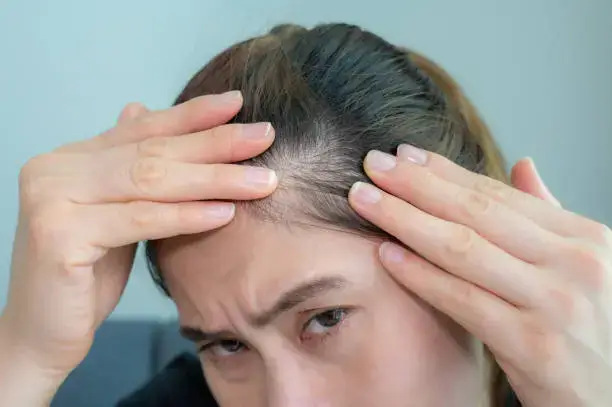
Ha-ir loss is more than a physical change; it significantly impacts the emotional and psychological well-being of individuals facing this condition. Many people experiencing ha-ir loss may feel a profound sense of loss, leading to lowered self-esteem and increased anxiety. The societal pressure to maintain a full head of ha-ir often exacerbates feelings of inadequacy, creating a cycle of negative emotions that can affect various aspects of life, including personal relationships and professional opportunities.
Understanding the emotional repercussions of ha-ir loss is crucial for addressing the mental health needs that accompany this condition. One effective approach is to seek psychological support through therapy or counseling. A trained therapist can provide coping strategies tailored to individual experiences, helping clients navigate their feelings and develop resilience against societal pressures. Cognitive-behavioral therapy (CBT), for example, is beneficial for reframing negative thoughts related to appearance and can significantly improve self-acceptance.
Another avenue worth exploring is joining support groups. Sharing experiences with others facing similar ha-ir loss challenges can foster a sense of belonging and reduce feelings of isolation. In these environments, individuals can openly discuss their feelings, learn coping mechanisms from peers, and share resources related to treatment options. This shared understanding nurtures a supportive community, which is essential for emotional healing.
Moreover, promoting open discussions about ha-ir loss in various forums, such as social media, can help destigmatize the issue. By normalizing conversations about ha-ir loss, individuals contribute to a culture of acceptance and understanding, which can ease some of the emotional burdens associated with this condition. Ultimately, acknowledging the emotional impact of hair loss and exploring available coping strategies are vital steps for those affected to navigate their journey towards restoration and improved mental health.
Did You Try this tips ?
There are no reviews yet. Be the first one to write one.
blood work brain health climate health diabetes treatments digestive health disease management disease mapping exercise plan fitness tips hair care hair growth hair treatment headache treatment health care health expenses health foods health insurance health secrets health tips healthy alternatives healthy habits healthy recipes heart health home workouts immune boost immune foods keto delivery lifestyle diseases medicine innovation mental health morning exercise natural remedies nutritional advice raw nutrition skin cancer skin care skin health sleep exercise sleep technology telemedicine services telemedicine solutions unhealthy habits viral threats walking benefits weight loss
